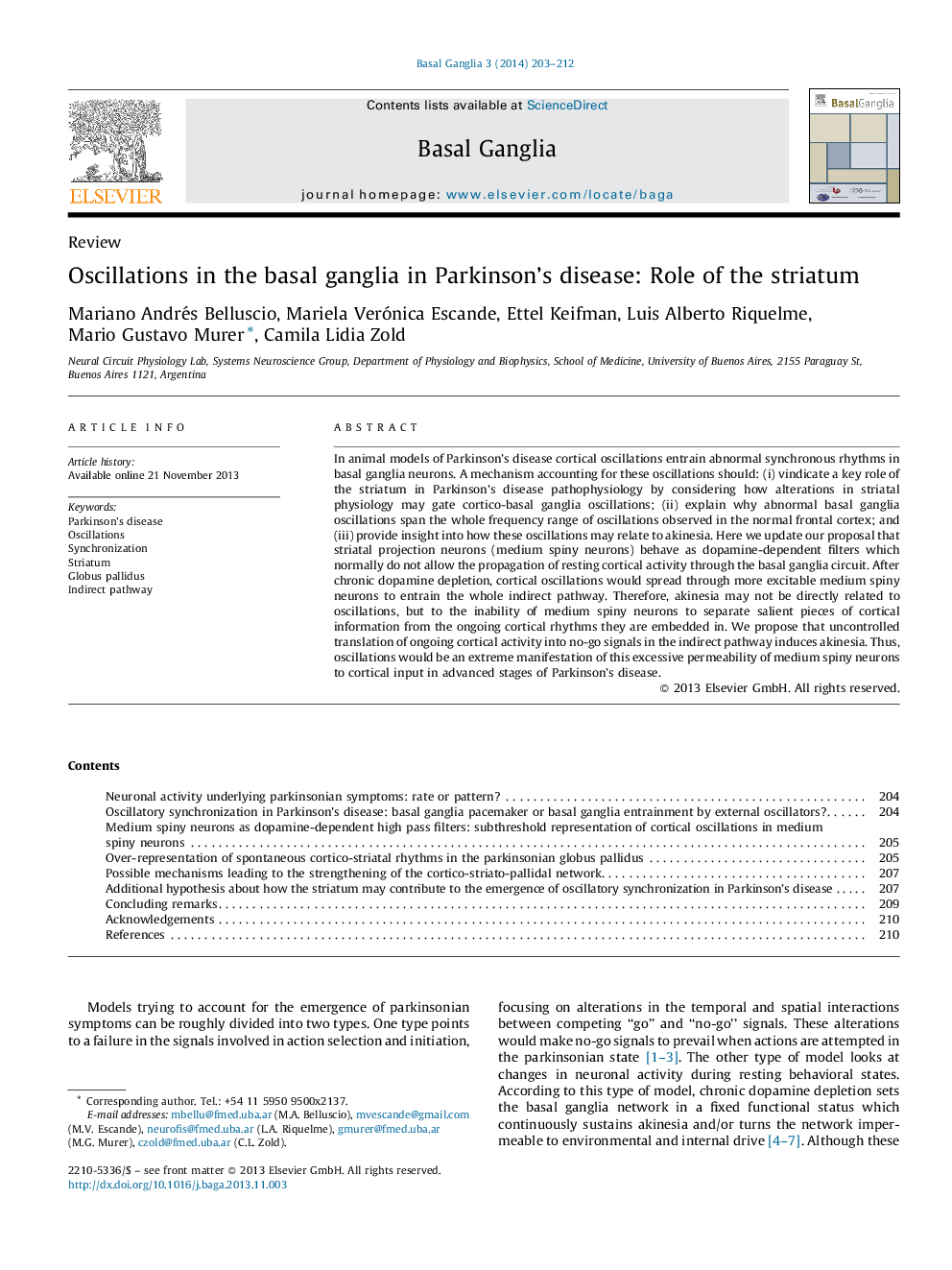| Article ID | Journal | Published Year | Pages | File Type |
|---|---|---|---|---|
| 3036130 | Basal Ganglia | 2014 | 10 Pages |
Abstract
In animal models of Parkinson's disease cortical oscillations entrain abnormal synchronous rhythms in basal ganglia neurons. A mechanism accounting for these oscillations should: (i) vindicate a key role of the striatum in Parkinson's disease pathophysiology by considering how alterations in striatal physiology may gate cortico-basal ganglia oscillations; (ii) explain why abnormal basal ganglia oscillations span the whole frequency range of oscillations observed in the normal frontal cortex; and (iii) provide insight into how these oscillations may relate to akinesia. Here we update our proposal that striatal projection neurons (medium spiny neurons) behave as dopamine-dependent filters which normally do not allow the propagation of resting cortical activity through the basal ganglia circuit. After chronic dopamine depletion, cortical oscillations would spread through more excitable medium spiny neurons to entrain the whole indirect pathway. Therefore, akinesia may not be directly related to oscillations, but to the inability of medium spiny neurons to separate salient pieces of cortical information from the ongoing cortical rhythms they are embedded in. We propose that uncontrolled translation of ongoing cortical activity into no-go signals in the indirect pathway induces akinesia. Thus, oscillations would be an extreme manifestation of this excessive permeability of medium spiny neurons to cortical input in advanced stages of Parkinson's disease.
Related Topics
Life Sciences
Neuroscience
Neurology
Authors
Mariano Andrés Belluscio, Mariela Verónica Escande, Ettel Keifman, Luis Alberto Riquelme, Mario Gustavo Murer, Camila Lidia Zold,
